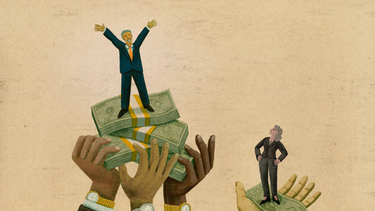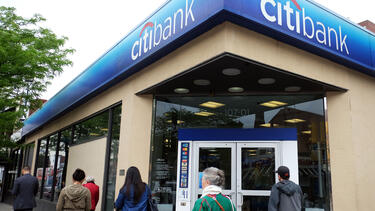Diversity and Inclusion
For Women, Female Peer Groups Are Crucial for Career Advancement
When women have more female peers in their MBA programs, they are more likely to reach senior management roles, according to a new study co-authored by Yale SOM’s Menaka Hampole.

Museum and Community: Connecting with a Diverse City
The Museum of Fine Arts, Houston is one of the largest museums in the United States; it is also a local institution in the second-most-diverse large city in the country. Bradley Bailey ’10, the museum’s curator of Asian art, explains how the museum collaborates with immigrant communities to expand the understanding of Asian art.

A Simple Thumbs Up or Down Eliminates Racial Bias in Online Ratings
Yale SOM’s Tristan Botelho and his co-authors found that the ubiquitous five-star rating system could subtly propagate discrimination. But they also found a surprisingly simple fix: switching to a two-point scale (thumbs up or thumbs down) eliminated subtle racial bias in customer ratings of gig workers.

Why It’s Harder for Women Founders to Get Venture Capital Funding
A new study co-authored by Yale SOM’s Heather Tookes shows that women are less likely to get funding compared to men with similar entrepreneurial history. One reason is that investors who have experienced a poor outcome from a woman-led startup shy away from other women founders—but benefitting from successes of women founders doesn’t lead them to invest more.

Firms Aren’t Living Up to Their Diversity Claims
A new paper co-authored by Professor Edward Watts finds that for many companies, actual diversity efforts bear little resemblance to the claims made in public disclosures. What’s more, funds from socially conscious investors flow more to firms that engage in this “diversity washing.”
Teachers See Misbehavior from Black Students as More Blameworthy
In order to isolate the role of race in teacher-student interactions, Prof. Jayanti Owens created videos using actors to depict misbehavior. She found that teachers are more likely to describe an incident with “blaming” language if the actor playing the misbehaving students is Black.

How a Time Out Can Help Address Bias
The Bias Time Out, developed by a team including Gina Calder ’22 and Dr. Cecelia Calhoun ’21, helps healthcare teams spot and address bias in real time.

Ratings Systems Amplify Racial Bias on Gig-Economy Platforms
A new Yale SOM study found that the five-star ratings on platforms like Uber and TaskRabbit can spread the effects of racial discrimination by displaying ratings from biased users to those who otherwise would not discriminate.
How Property Tax Foreclosure Accelerates Gentrification and Magnifies the Racial Wealth Gap
Non-white homeowners are at disproportionate risk of losing their homes over unpaid property taxes, shows new research from Yale SOM’s Cameron LaPoint.

Black Households Have Less Access to Banks
Why do some demographic groups visit banks less than others? According to a new study by Yale SOM’s Alexander Zentefis and the Fed’s Jung Sakong, the primary barrier for Black households is a lack of nearby branches.

Black Boys Face Double Jeopardy at School
Teachers tend to blame Black boys more than White boys for identical misbehaviors, finds Yale SOM’s Jayanti Owens. Black and Latino boys also receive harsher punishment because the schools they attend tend to have more punitive cultures.
